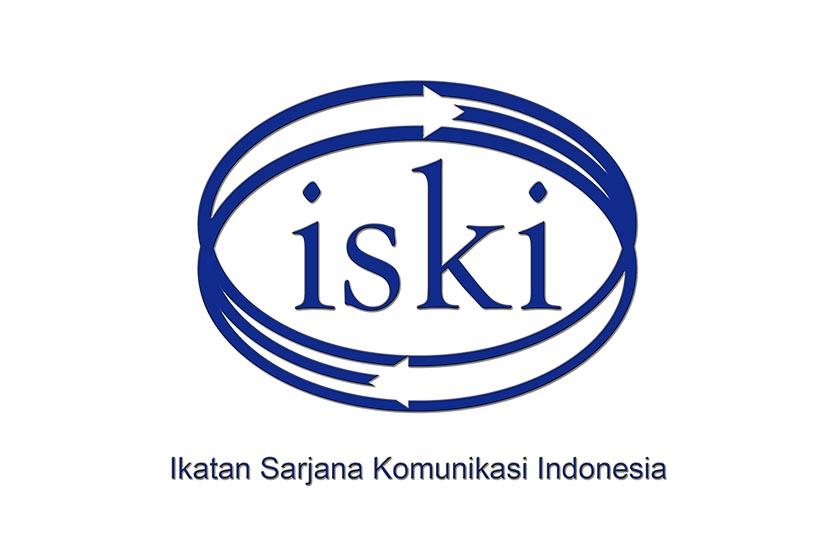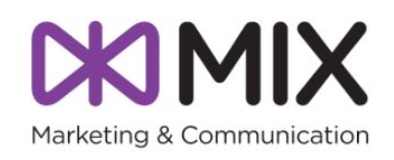Branded Content Analysis (BCA)
Four Models and Approaches
DOI:
https://doi.org/10.36782/jobmark.v3i1.214Keywords:
Content Analysis, Directional Approach, Natural Approach, Conditional Approach, Instrumental ApproachAbstract
Branded content is any content that contains brand elements, either expressly or impliedly. Branded Content Analysis (BCA) analyzes branded content and finds explicit and implied meanings related to brand communication strategy. There are four BCA models and approaches. First, Directional BCA, which is the BCA method that uses a specific theoretical lens or concept to read the textual meaning of content, both verbal, visual, aural, audiovisual, textural, and nasal. Thus text coding is based on fundamental concepts that exist in theory. Second, Natural BCA, namely the BCA approach, does not use concepts or theories to read the textual meaning of content but naturally finds meaningful patterns that refer to key themes that stand out in the text. Third, Conditional BCA, namely the BCA method, depends on the tendency of issues framing in the text based on the dominant keywords. Fourth, Instrumental BCA, namely the BCA method, focuses on how content influences audiences through fundamental modes facilitated by the media, both textually, technically, and kinetically.
Downloads
References
Altheide, D. L. (1987). Reflections: Ethnographic content analysis. Qualitative sociology, 10(1), 65-77.
Anderson, R. (2007). Thematic content analysis (TCA). Descriptive presentation of qualitative data, 3, 1-4.
Bell, P. (2012). Content analysis of visual images. SAGE visual methods: Interpretation and classification, 3, 31-57.
Bengtsson, M. (2016). How to plan and perform a qualitative study using content analysis. NursingPlus open, 2, 8-14.
Bos, W., & Tarnai, C. (1999). Content analysis in empirical social research. International journal of educational research, 31(8), 659-671.
Bowman, E. H. (1984). Content analysis of annual reports for corporate strategy and risk. Interfaces, 14(1), 61-71.
Carley, K. (1993). Coding choices for textual analysis: A comparison of content analysis and map analysis. Sociological Methodology, 75-126.
Cavanagh, S. (1997). Content analysis: concepts, methods and applications. Nurse researcher, 4(3), 5-16.
Cho, J. Y., & Lee, E. H. (2014). Reducing confusion about grounded theory and qualitative content analysis: Similarities and differences. Qualitative report, 19(32). 1-20
Deacon, D. (2007). Yesterday’s papers and today’s technology: Digital newspaper archives and ‘push button’ content analysis. European journal of communication, 22(1), 5-25.
Downe-Wamboldt, B. (1992). Content analysis: method, applications, and issues. Health care for women international, 13(3), 313-321.
Elo, S., & Kyngäs, H. (2008). The qualitative content analysis process. Journal of advanced nursing, 62(1), 107-115.
Elo, S., Kääriäinen, M., Kanste, O., Pölkki, T., Utriainen, K., & Kyngäs, H. (2014). Qualitative content analysis: A focus on trustworthiness. SAGE open, 4(1), 2158244014522633.
Erlingsson, C., & Brysiewicz, P. (2017). A hands-on guide to doing content analysis. African journal of emergency medicine, 7(3), 93-99.
Forman, J., & Damschroder, L. (2007). Qualitative content analysis. In Empirical methods for bioethics: A primer (pp. 39-62). Emerald Group Publishing Limited.
Graneheim, U. H., Lindgren, B. M., & Lundman, B. (2017). Methodological challenges in qualitative content analysis: A discussion paper. Nurse Education Today, 56, 29-34.
Hardy, C., Harley, B., & Phillips, N. (2004). Discourse analysis and content analysis: Two solitudes. Qualitative methods, 2(1), 19-22.
Harwood, T. G., & Garry, T. (2003). An overview of content analysis. The marketing review, 3(4), 479-498.
Hermann, M. G. (2008). Content analysis. In Qualitative methods in international relations: A pluralist guide (pp. 151-167). London: Palgrave Macmillan UK.
Herring, S. C. (2004). Content analysis for new media: Rethinking the paradigm. In New research for new media: Innovative research methodologies symposium working papers and readings (Vol. 2, No. 12, pp. 47-66).
Herring, S. C., Scheidt, L. A., Kouper, I., & Wright, E. (2012). Longitudinal content analysis of blogs: 2003–2004. In Blogging, citizenship, and the future of media (pp. 3-20). Routledge.
Hsieh, H. F., & Shannon, S. E. (2005). Three approaches to qualitative content analysis. Qualitative health research, 15(9), 1277-1288.
Huckin, T. (2003). Content analysis: What texts talk about. In What writing does and how it does it (pp. 19-38). Routledge.
Humble, Á. M. (2009). Technique triangulation for validation in directed content analysis. International journal of qualitative methods, 8(3), 34-51.
Kassarjian, H. H. (1977). Content analysis in consumer research. Journal of consumer research, 4(1), 8-18.
Kim, I., & Kuljis, J. (2010). Applying content analysis to web-based content. Journal of Computing and Information Technology, 18(4), 369-375.
Kleinheksel, A. J., Rockich-Winston, N., Tawfik, H., & Wyatt, T. R. (2020). Demystifying content analysis. American journal of pharmaceutical education, 84(1), 7113.
Kolbe, R. H., & Burnett, M. S. (1991). Content-analysis research: An examination of applications with directives for improving research reliability and objectivity. Journal of consumer research, 18(2), 243-250.
Kracauer, S. (1952). The challenge of qualitative content analysis. Public Opinion Quarterly, 631-642.
Krippendorff, K. (2004). Reliability in content analysis: Some common misconceptions and recommendations. Human communication research, 30(3), 411-433.
Krippendorff, K. (2009). The content analysis reader. Sage.
Krippendorff, K. (2018). Content analysis: An introduction to its methodology. Sage publications.
Kyngäs, H., Kääriäinen, M., & Elo, S. (2020). The trustworthiness of content analysis. The application of content analysis in nursing science research, 41-48.
Lacy, S., Watson, B. R., Riffe, D., & Lovejoy, J. (2015). Issues and best practices in content analysis. Journalism & mass communication quarterly, 92(4), 791-811.
Lai, L. S., & To, W. M. (2015). Content analysis of social media: A grounded theory approach. Journal of electronic commerce research, 16(2), 138.
Lewis, S. C., Zamith, R., & Hermida, A. (2013). Content analysis in an era of big data: A hybrid approach to computational and manual methods. Journal of broadcasting & electronic media, 57(1), 34-52.
Lindgren, B. M., Lundman, B., & Graneheim, U. H. (2020). Abstraction and interpretation during the qualitative content analysis process. International journal of nursing studies, 108, 103632.
Mayring, P. (2004). Qualitative content analysis. A companion to qualitative research, 1(2), 159-176.
Mayring, P. (2015). Qualitative content analysis: Theoretical background and procedures. Approaches to qualitative research in mathematics education: Examples of methodology and methods, 365-380.
Mayring, P. (2019). Qualitative content analysis: Demarcation, varieties, developments. In Forum: Qualitative Social Research (Vol. 20, No. 3). Freie Universität Berlin.
McTavish, D. G., & Pirro, E. B. (1990). Contextual content analysis. Quality and quantity, 24(3), 245-265.
Mitchell, R. E. (1967). The use of content analysis for explanatory studies. Public Opinion Quarterly, 31(2), 230-241.
Morgan, D. L. (1993). Qualitative content analysis: a guide to paths not taken. Qualitative health research, 3(1), 112-121.
Neuendorf, K. A. (2010). Reliability for content analysis. In Media messages and public health (pp. 85-105). Routledge.
Neuendorf, K. A. (2017). The content analysis guidebook. sage.
Pfeiffer, S., Fischer, S., & Effelsberg, W. (1997). Automatic audio content analysis. In Proceedings of the fourth ACM International Conference on Multimedia (pp. 21-30).
Potter, W. J., & Levine-Donnerstein, D. (1999). Rethinking validity and reliability in content analysis. Journal of Applied Communication Research, 27, 258-284.
Prasad, B. D. (2019). Qualitative content analysis: Why is it still a path less taken?. In Forum Qualitative Sozialforschung/Forum: Qualitative Social Research (Vol. 20, No. 3). DEU.
Prior, L. (2014). Content analysis. The Oxford handbook of qualitative research, 359-379.
Renz, S. M., Carrington, J. M., & Badger, T. A. (2018). Two strategies for qualitative content analysis: An intramethod approach to triangulation. Qualitative health research, 28(5), 824-831.
Riffe, D., & Freitag, A. (1997). A content analysis of content analyses: Twenty-five years of Journalism Quarterly. Journalism & Mass Communication Quarterly, 74(3), 515-524.
Roller, M. R. (2019). A quality approach to qualitative content analysis: Similarities and differences compared to other qualitative methods. In Forum Qualitative Sozialforschung/Forum: Qualitative Social Research (Vol. 20, No. 3).
Stemler, S. E. (2015). Content analysis. Emerging trends in the social and behavioral sciences: An Interdisciplinary, Searchable, and Linkable Resource, 1-14.
Strijbos, J. W., Martens, R. L., Prins, F. J., & Jochems, W. M. (2006). Content analysis: What are they talking about?. Computers & education, 46(1), 29-48.
Vaismoradi, M., Turunen, H., & Bondas, T. (2013). Content analysis and thematic analysis: Implications for conducting a qualitative descriptive study. Nursing & health sciences, 15(3), 398-405.
Vrij, A. (2005). Criteria-Based Content Analysis: A Qualitative Review of the First 37 Studies. Psychology, Public Policy, and Law, 11(1), 3.
Weare, C., & Lin, W. Y. (2000). Content analysis of the World Wide Web: Opportunities and challenges. Social Science Computer Review, 18(3), 272-292.
Weber, R. P. (1990). Basic content analysis. Sage.
Wijaya, B. S. (2013). How ‘Deep’ is Your Brand? The Hierarchical Effects Model of Emotional Branding. Journal Communication Spectrum, 3(2), 158-169.
White, M. D., & Marsh, E. E. (2006). Content analysis: A flexible methodology. Library Trends, 55(1), 22-45.
Zimmer, M. R., & Golden, L. L. (1988). Impressions of retail stores: A content analysis of consume. Journal of Retailing, 64(3), 265.
Published
How to Cite
Issue
Section
License
Copyright (c) 2021 Jobmark: Journal of Branding and Marketing Communication

This work is licensed under a Creative Commons Attribution-NonCommercial 4.0 International License.


















